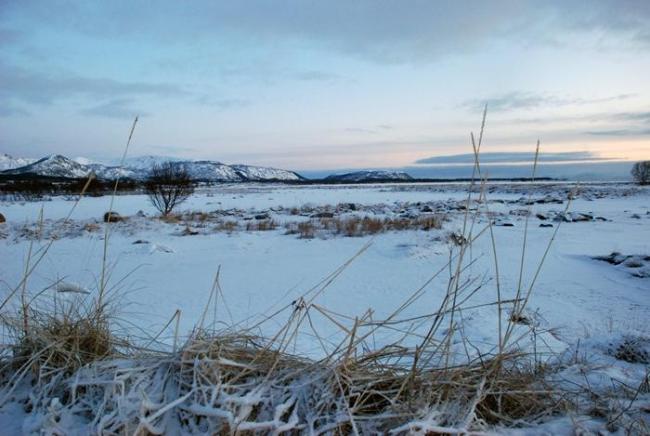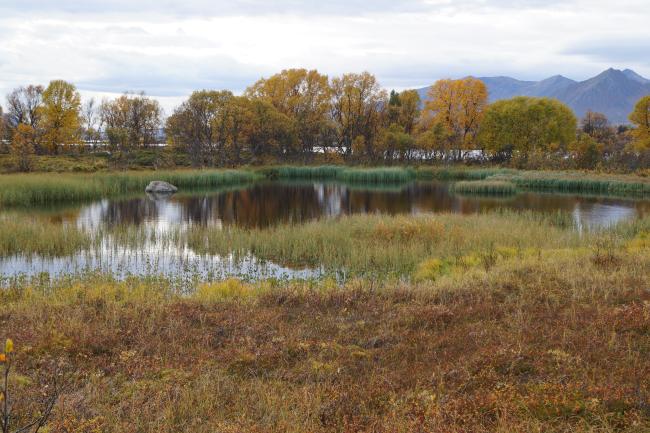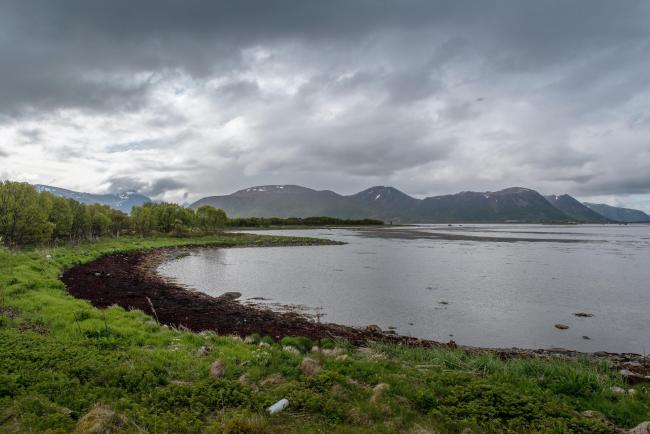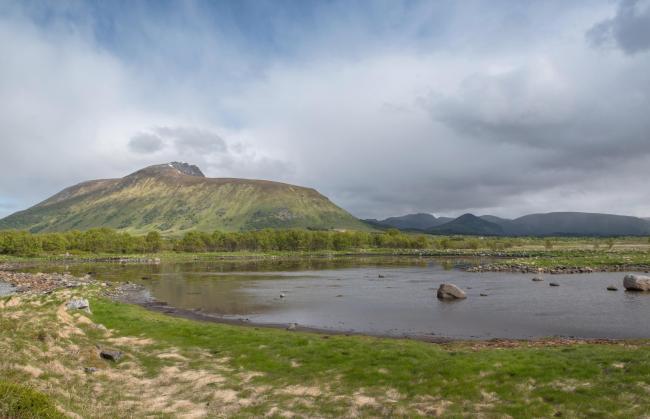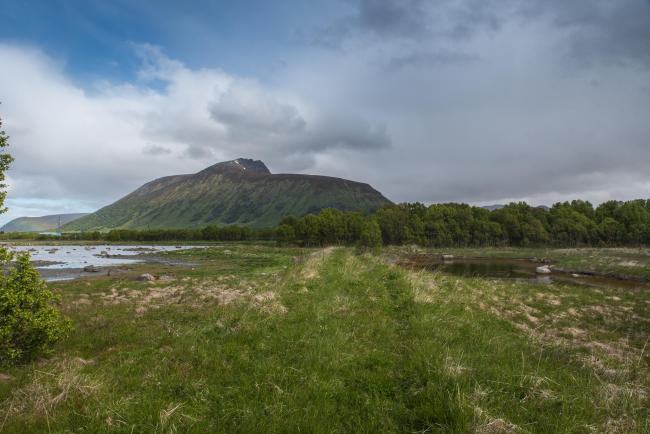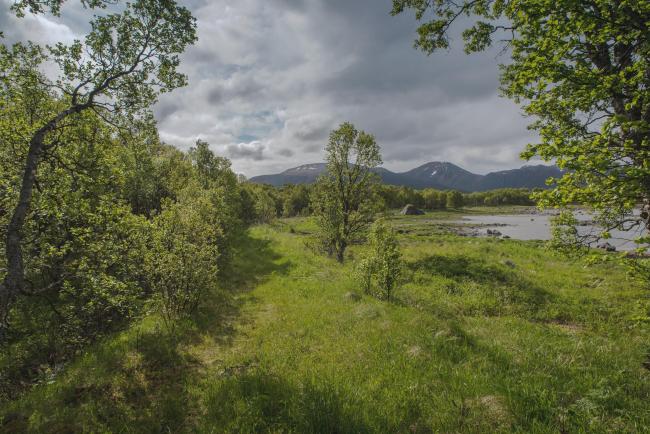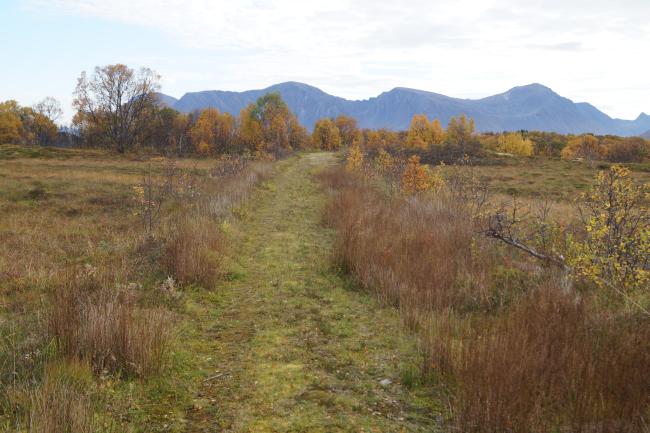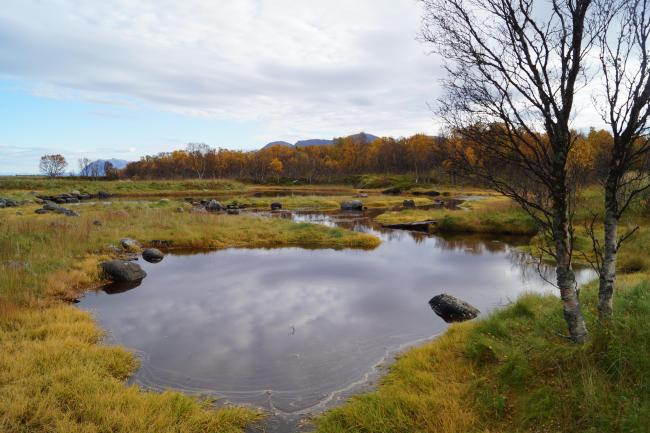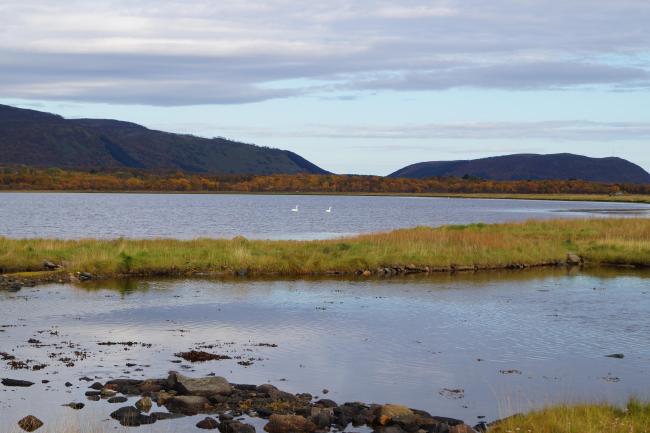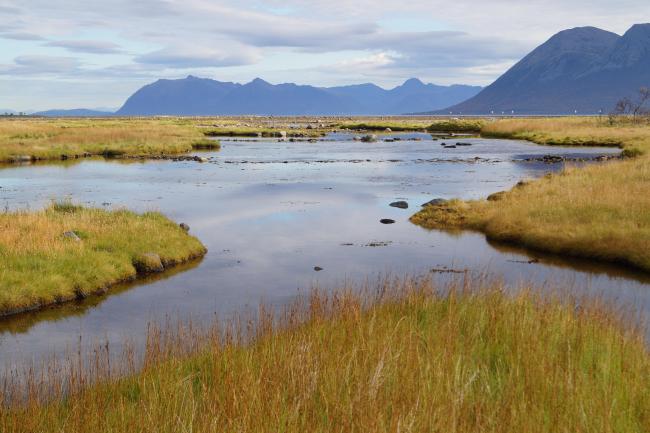Risøysundet
Risøysundet
- Country:
- Norway
- Site number:
- 2163
- Area:
- 504.0 ha
- Designation date:
- 27-05-2013
- Coordinates:
- 68°58'59"N 15°41'36"E
Carousel
CarouselMaterials presented on this website, particularly maps and territorial information, are as-is and as-available based on available data and do not imply the expression of any opinion whatsoever on the part of the Secretariat of the Ramsar Convention concerning the legal status of any country, territory, city or area, or of its authorities, or concerning the delimitation of its frontiers or boundaries.
The Site consists of shallow marine areas within a complex of flat grassy islets, lagoons and brackish swamps, supporting communities of Zostera, Potamogeton and Salicornia. In the western part, there is a 15-hectare lake surrounded by a large beach meadow complex. There are also exposed bays, isolated freshwater ponds, sheltered salt marshes and exposed seaweed meadows which are important for shoreline stabilization. The Site supports one of the few, intact larger mud or sand flats in northern Norway, and a broad range of regionally rare sublittoral plant species. Many waterbirds depend on these rich areas for food and rest during their spring and autumn migrations. More than 50 species of waterfowl have been recorded here, mainly ducks and waders, with some populations reaching several thousand individuals. The Site is a particularly important staging area for pink-footed geese (Anser brachyrhynchus) during their spring migration. Considerable numbers of staging birds have been recorded, such as the red-breasted merganser (Mergus serrator) the long-tailed duck (Clangula hyemalis), the common ringed plover (Charadrius hiaticula), the dunlin (Calidris alpina) and the great cormorant (Phalacrocorax carbo). The Site regularly supports a stable population of the European otter (Lutra lutra). The area features archaeological and historical remains. The main land uses are livestock grazing, tourism, fishing and birdwatching.
- Nature Reserve - Risøysundet
- NO2163RIS_2306_en.pdf
- NO2163RISformer_171124.pdf
- NO2163RISformer_220630_1807_en.pdf
- NO2163map2013.pdf
